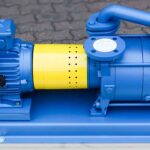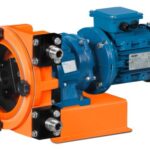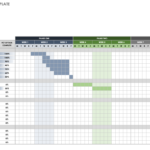DBOOM, or Design Build Own Operate Maintain, is a project delivery method in which a single entity or consortium is responsible for the design, construction, financing, operation, and maintenance of a facility or infrastructure over a specified period of time, typically ranging from 10 to 30 years. DBOOM concept is used in a wide range of projects like highways, bridges, tunnels, airports, oil and gas, and public utilities.
Under this model, the owner of the facility enters into a long-term agreement with the DBOOM entity, which may be a single company or a group of companies working together. The DBOOM entity is responsible for financing the project, designing and constructing the facility, and then operating and maintaining it for the duration of the agreement.
This model is often used for large infrastructure projects such as highways, bridges, tunnels, and airports, as well as for public-private partnerships in areas such as water treatment, waste management, and energy generation. The DBOOM model can offer advantages such as faster project delivery, lower costs, and improved performance and maintenance over the life of the facility. However, it also involves risks and challenges related to financing, design, and long-term operations and maintenance.
Advantages and Disadvantages of DBOOM
DBOOM, or Design Build Own Operate Maintain, is a project delivery method that offers both advantages and disadvantages. Here are some of the key benefits and drawbacks:
Advantages of DBOOM:
- Single-point responsibility: With DBOOM, a single entity or consortium is responsible for all aspects of the project from design to operation, which can help reduce conflicts and simplify project management.
- Faster project delivery: DBOOM can accelerate project delivery by overlapping the design and construction phases, which can result in faster completion times compared to traditional project delivery methods.
- Improved quality: DBOOM can lead to improved quality and performance because the DBOOM entity has a long-term interest in the facility’s success and is responsible for maintaining it over the life of the project.
- Lower costs: DBOOM can help reduce costs because the entity responsible for financing the project also designs and constructs it, which can lead to cost savings.
Disadvantages of DBOOM:
- Higher financial risk: The DBOOM entity is responsible for financing the project, which can be a significant financial risk. If the project is not successful, the entity may face financial losses.
- Limited flexibility: Once the DBOOM entity has designed and constructed the facility, the owner may have limited options to modify or adapt it in the future.
- Potential for conflicts of interest: Because the DBOOM entity is responsible for both designing and constructing the facility and operating and maintaining it, there is a potential for conflicts of interest that may impact project outcomes.
- Reduced control: The owner of the facility may have reduced control over the project because the DBOOM entity is responsible for all aspects of the project from design to operation.
Examples of DBOOM Projects
Here are some examples of DBOOM projects:
Oman Gas Company Pipeline Project: The Oman Gas Company Pipeline Project is a DBOOM project that involves the design, construction, financing, operation, and maintenance of a natural gas pipeline network in Oman. The project is being operated and maintained by a consortium of companies under a 20-year contract.
Sohar Refinery Improvement Project: The Sohar Refinery Improvement Project in Oman is a DBOOM project that involves the design, construction, financing, operation, and maintenance of a refinery and associated facilities. The project is being operated and maintained by a consortium of companies under a 25-year contract.
Mangalore Refinery and Petrochemicals Limited: The Mangalore Refinery and Petrochemicals Limited (MRPL) in India is a DBOOM project that involves the design, construction, financing, operation, and maintenance of a refinery and associated facilities. The project is being operated and maintained by a consortium of companies under a 15-year contract.
Bina Refinery Project: The Bina Refinery Project in India is a DBOOM project that involves the design, construction, financing, operation, and maintenance of a refinery and associated facilities. The project is being operated and maintained by a consortium of companies under a 15-year contract.
Rajasthan Block Oil and Gas Development Project: The Rajasthan Block Oil and Gas Development Project in India is a DBOOM project that involves the design, construction, financing, operation, and maintenance of oil and gas production facilities and pipelines. The project is being operated and maintained by a consortium of companies under a 25-year contract.
Sakhalin-2 Oil and Gas Project: The Sakhalin-2 Oil and Gas Project in Russia is a DBOOM project that involves the design, construction, financing, operation, and maintenance of oil and gas production facilities, pipelines, and a liquefied natural gas plant. The project is being operated and maintained by a consortium of companies under a 25-year contract.
Pengerang Integrated Complex: The Pengerang Integrated Complex in Malaysia is a DBOOM project that involves the design, construction, financing, operation, and maintenance of a refinery, petrochemical complex, and associated facilities. The project is being operated and maintained by a consortium of companies under a 20-year contract.
Tengizchevroil Future Growth Project-Wellhead Pressure Management Project: The Tengizchevroil Future Growth Project-Wellhead Pressure Management Project in Kazakhstan is a DBOOM project that involves the design, construction, financing, operation, and maintenance of facilities to increase production capacity from the Tengiz oil field. The project is being operated and maintained by a consortium of companies under a 25-year contract.
Lula Oil Field: The Lula Oil Field in Brazil is a DBOOM project that involves the design, construction, financing, operation, and maintenance of offshore production facilities and pipelines. The project is being operated and maintained by a consortium of companies under a 20-year contract.
Karachaganak Field Development Project: The Karachaganak Field Development Project in Kazakhstan is a DBOOM project that involves the design, construction, financing, operation, and maintenance of oil and gas production facilities and pipelines. The project is being operated and maintained by a consortium of companies under a 40-year contract.
Sydney Desalination Plant: The Sydney Desalination Plant is a DBOOM project that provides drinking water to the Sydney metropolitan area. The plant was designed, built, financed, and is being operated and maintained by a consortium of companies under a 20-year contract.
Rio de Janeiro-Galeão International Airport: The Rio de Janeiro-Galeão International Airport in Brazil was privatized through a DBOOM project in 2014. A consortium of companies won the bid to operate the airport for 25 years, and they are responsible for its design, construction, financing, operation, and maintenance.
Hong Kong-Zhuhai-Macau Bridge: The Hong Kong-Zhuhai-Macau Bridge is a DBOOM project that connects Hong Kong, Zhuhai, and Macau in China. The project was designed, built, and is being operated and maintained by a consortium of companies under a 30-year contract.
Interstate 69: The Interstate 69 project in Indiana, United States, is a DBOOM project that involves the design, construction, financing, operation, and maintenance of a new section of the highway. A consortium of companies won the bid to build and operate the highway for 35 years.
Jebel Ali Power and Desalination Station: The Jebel Ali Power and Desalination Station in Dubai, United Arab Emirates, is a DBOOM project that provides electricity and water to the city. The project was designed, built, financed, and is being operated and maintained by a consortium of companies under a 20-year contract.
Difference between DBOOM and EPC Turnkey Projects
Both DBOOM (Design Build Own Operate Maintain) and EPC Turnkey (Engineering, Procurement, and Construction Turnkey) are project delivery methods that involve a single entity or consortium responsible for the entire project from design to construction. However, there are some key differences between these two methods:
Ownership and operation: In a DBOOM project, the entity responsible for the project also owns and operates the facility for a specified period, typically ranging from 15 to 30 years. In contrast, in an EPC Turnkey project, the entity responsible for the project designs and constructs the facility, but the owner assumes ownership and operation once the project is complete.
Financing: In a DBOOM project, the entity responsible for the project is also responsible for financing the project. In contrast, in an EPC Turnkey project, the owner typically provides financing for the project.
Maintenance: In a DBOOM project, the entity responsible for the project is also responsible for the maintenance and upkeep of the facility for the duration of the agreement. In contrast, in an EPC Turnkey project, maintenance and upkeep are the responsibility of the owner once the project is complete.
Duration: The duration of a DBOOM project is typically longer than that of an EPC Turnkey project. In a DBOOM project, the entity responsible for the project owns and operates the facility for a specified period, while in an EPC Turnkey project, the owner assumes ownership and operation once the project is complete.
Overall, the main difference between DBOOM and EPC Turnkey projects is the ownership and operation of the facility. In a DBOOM project, the entity responsible for the project owns and operates the facility for a specified period, while in an EPC Turnkey project, the owner assumes ownership and operation once the project is complete.






